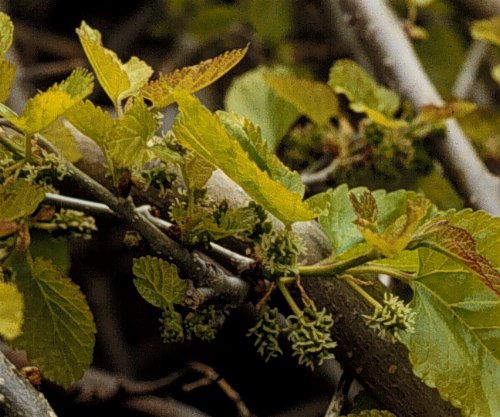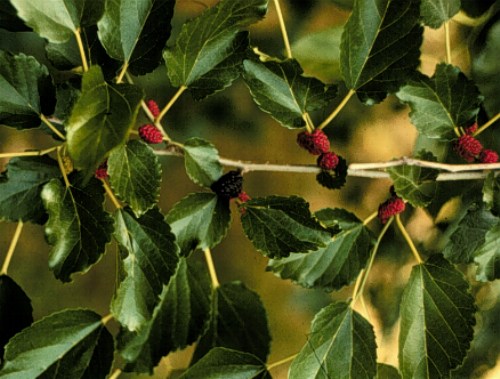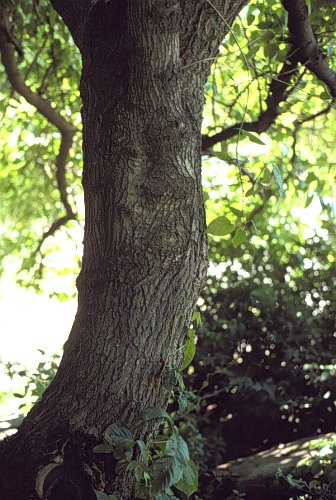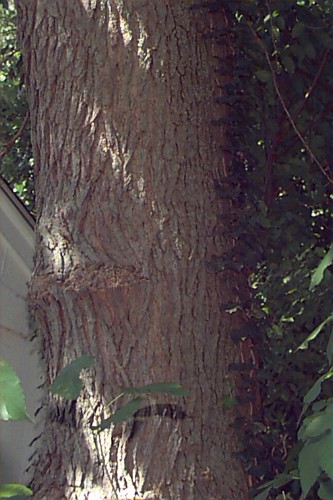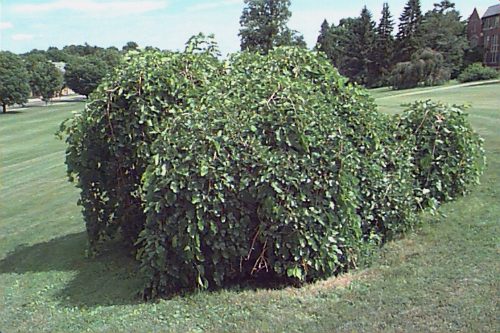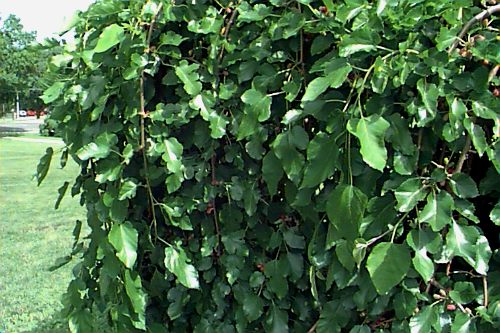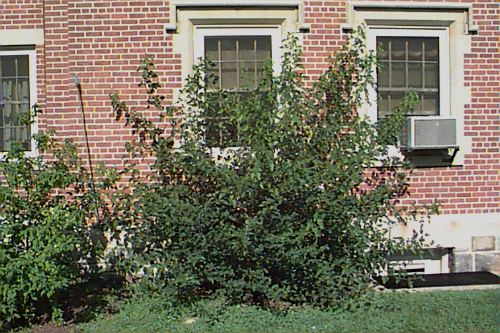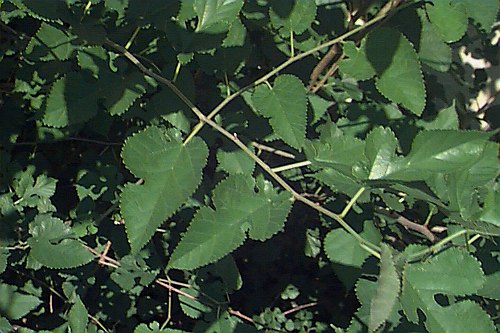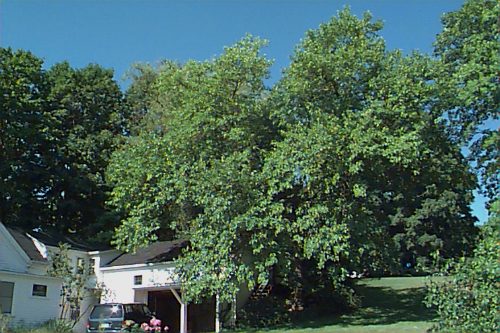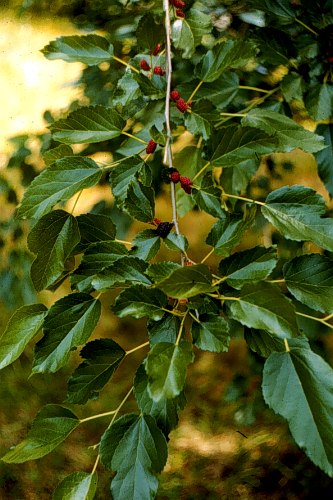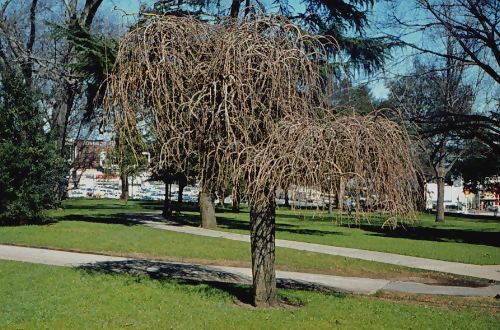Morus alba
White Mulberry, Common Mulberry
Moraceae
ExpandHabitat
- native to China
- hardy to zone 5, and warmer parts of zone 4
- Special Note: This species has demonstrated an invasive tendency in Connecticut, meaning it may escape from cultivation and naturalize in minimally managed areas. For more information, .
Habit and Form
- a deciduous, medium to large tree
- dense, rounded tree
- 30' to 50' and equal in spread
- fast growing
- coarse texture
Summer Foliage
- alternate leaf arrangement
- leaves have many shapes, can be lobed or not
- serrate leaf margins
- rounded cordate leaf base
- pubescent leaf give a rough texture
- dark green leaf color
Autumn Foliage
- dull yellow fall color
- color develops late
- color quality varies
Flowers
- fleshy white to red fruit
- drupe
- up to 1" long
- ripens in June to July
- edible
Fruit
- similar in shape and size to a long blackberry
- a multiple fruit composed of numerous small, fleshy drupes
- typically a mix of white, pink, red and purple
- edible
- relished by birds
- fruits and bird droppings will stain sidewalks badly
Bark
- light tannish brown
- stems are yellowish brown
- sweet taste
- white substance appears when stem is broken in warm conditions
Culture
- transplants readily
- tolerant of drought, urban and seaside conditions
- full sun
- prune in winter
- prefers moist, well-drained fertile soil
- pH adaptable
Landscape Use
- for extreme tolerance
- difficult sites
- raise silkworms
- fruit attracts birds
- fruitless and weeping forms more useful than straight species
Liabilities
- considered "trash tree"
- suckers
- invasive
- bacterial blight, leaf spot, canker, powdery mildewy, scale, witches' broom
- tree looks unkept
- fruit can be extremely messy, don't plant near walkways or parking lots
ID Features
- alternate leaf arrangement
- variable leaf shape with serrate leaf margins
- fleshy drupe fruit
- imbricate buds with fine hairs or scale tips
- terminal bud absent
- rough leaves
- bark sweet when chewed
Propagation
- by cuttings
- by seed
- tissue culture
Cultivars/Varieties
'Fruitless' and 'Mapleleaf' - These non-fruiting male forms, which are similar and confused in the trade, bear deeply-lobed glossy leaves that superficially resemble the foliage of true maples (Acer). They form rounded, spreading trees to 40' tall and wide.
'Laciniata' - As per the species, this selection only differs with its strongly-lobed, serrated leaves of finer texture.
'Nuclear Blast' - Appropriately named and perhaps worth owning only for its novel moniker, this shrubby plant has leaves that are reduced to slivers and ribbons. Despite the ridicule of most every observer, this mutant -- which appears as if spawned by radiation exposure -- is nonetheless offered by some specialty nurseries.
'Pendula' - The most commonly seen form of the species, this selection forms a small tree to 20' tall with harshly weeping, often gnarled branches. This form does produce fruit, though 'Urbana' is a similar fruitless cultivar.
